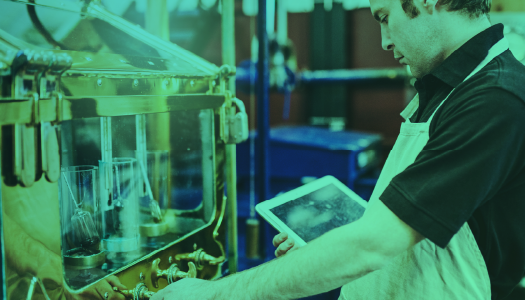5 Simple Steps for Creating a Preventive Maintenance Plan
Preventive maintenance is an important aspect of keeping any machinery running at peak performance. It can reduce equipment downtime, increase productivity, and even boost customer satisfaction ratings for the long term.
But, what is a preventive maintenance (PM) plan exactly?
A PM plan – also referred to as a proactive maintenance schedule – is simply an organized approach to how you maintain the conditions of your buildings, machines, and other critical assets. It requires a detailed maintenance strategy to prevent failures and identify critical equipment for which spare parts and other materials need to be kept on hand to address problems as they arise.
So how do you create one? Don’t worry, it’s not as complex as you might think. With a few easy steps and the right preventive maintenance software in place, you can create a successful and consistent preventive maintenance plan in no time.
What does a preventive maintenance plan include?
In order for your PM plan to be effective, it's important to consider the needs and goals of all stakeholders involved. This will ensure that your PM plan is comprehensive and meets all of your organization's needs. Let’s dive into what it takes to develop an effective preventive maintenance program.
- Key stakeholder engagement: Involving key stakeholders early in the process ensures that a PM plan aligns with organizational needs. This includes maintenance teams, operations staff, facility managers, and executive leadership.
- Strong team communication: Effective communication between maintenance teams, operators, and management ensures that preventive maintenance tasks are completed efficiently and on time.
- A detailed asset inventory: A comprehensive asset inventory is critical to effective scheduling and resource planning. Manual asset tracking can lead to errors and inefficiencies, so leveraging automated inventory management through the right software can help keep data accurate and up to date over time.
5 steps for creating your preventive maintenance plan
Creating a successful preventive maintenance plan might seem daunting, but it doesn't have to be. With five simple steps, you can build an effective plan that will help your organization save both time and money in the long run.
Step 1: Identify your goals and priorities
Before you can start to develop a PM program, it’s important to first define clear maintenance objectives. Common goals might include reducing downtime, lowering maintenance costs, extending asset lifespans, enhancing safety, etc.
It is also critical to create and measure KPIs attached to these goals, as this allows you to better gauge the effectiveness of your PM plan on organizational outcomes.
Step 2: Ensure you have the right software in place
Implementing an effective preventive maintenance program starts with the right tools, and a Computerized Maintenance Management System (CMMS) is essential for streamlining the process.
With the right CMMS, organizations can automate work orders, track asset performance, centralize maintenance data, and optimize resource allocation. A cloud-based platform enhances team communication, giving technicians, managers, and stakeholders real-time access to asset data from anywhere, reducing delays, increasing accountability, and ensuring maintenance tasks are completed efficiently.
Step 3: Create a consistent routine
Consistency is key when scheduling maintenance. Preventive tasks should follow a structured plan based on asset usage and manufacturer recommendations. Some organizations rely on time-based maintenance, conducting routine inspections at set intervals, while others use usage-based maintenance, triggering servicing after a specific number of operating hours or production cycles.
Keeping an up-to-date asset inventory ensures the right spare parts are always available, and automated inventory management prevents shortages, minimizes waste, and reduces downtime caused by waiting for critical components.
Step 4: Train and implement
A well-designed maintenance plan is only as effective as the team executing it. Training personnel on maintenance schedules, CMMS software, and cross-departmental communication ensures smooth implementation.
To ease adoption, start with a pilot program at one facility or for a specific asset category. Gather feedback, refine processes, and gradually expand the program to ensure it aligns with operational goals and available resources.
Step 5: Adjust your plan as needed
Preventive maintenance is an ongoing effort that requires continuous monitoring and refinement. A CMMS helps track KPIs and can reveal areas for improvement. If certain assets experience frequent breakdowns, schedules may need adjustments.
Underutilized resources can be reassigned to maximize efficiency, while excessive spare parts inventory signals an opportunity to optimize procurement. Regularly reviewing maintenance data keeps the program evolving, ensuring it remains effective and cost-efficient for you over time.
Implementing the right CMMS can make it happen
A well-designed preventive maintenance program can save businesses a lot of money and eliminate unpredictable downtime. And all the most successful preventive maintenance programs have one thing in common: a well-managed CMMS.
A modern CMMS can play an important role in ensuring efficient scheduling and tracking of maintenance tasks, improved operator and technician involvement, proactive problem prevention, reduced downtime, clear reporting/insights, and more.
It also provides real-time access to maintenance tasks from anywhere and anytime, helps streamline accurate forecasting, and offers powerful insights through integrated analytics.
Learn more about how to choose the right CMMS to help with your preventive maintenance program. Or check out this piece on how to measure the ROI of your PM plan.



